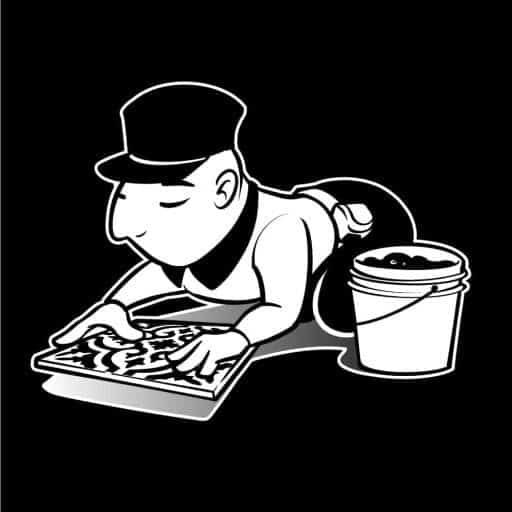Is Your Shower Leaking? Here’s When It’s Time to Remodel Your Bathroom
Ever stepped out of the shower and onto a weirdly damp floor? Or noticed a strange stain on the ceiling below your bathroom? You’re not alone. As someone who’s spent years remodeling bathrooms, I can tell you, those little signs are usually trying to tell you something. And ignoring them? That’s a risky move.
Leaky showers are one of the most common issues I deal with, and they tend to start small. A little moisture here, a discolored tile there. But left alone, they can quietly cause thousands of dollars in damage behind your walls and under your floors long before you see a real problem.
Let me walk you through what to watch out for, how it all happens, and why it’s often smarter (and cheaper) to deal with these issues head-on rather than wait for them to get worse.
The True Cost of a Leaky Shower
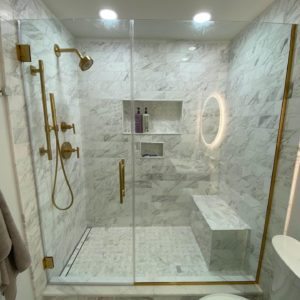
I’ve had a lot of homeowners tell me, “If I’d known it would get this bad, I would’ve fixed it sooner.” Water damage doesn’t stay in the bathroom. It spreads. I’ve seen it take out structural beams, electrical wiring, even parts of the foundation. And once mold gets involved, that’s a whole other headache.
Here’s what you might be looking at if a leak goes unchecked:
-
Mold remediation (not usually covered by insurance)
-
Replacing damaged drywall, ceilings, or framing
-
Flooring repairs, often in more than one room
-
Electrical issues
-
Plumbing replacements
-
A hit to your property value
Meanwhile, fixing the issue early with a well-done bathroom remodel is often far more affordable.
7 Signs Your Shower Might Be Leaking
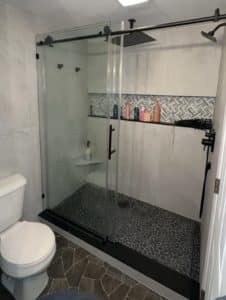
Over the years, I’ve noticed that leaking showers give you clues if you know what to look for. If any of these are happening in your home, it might be time to call in a pro:
1. Water Stains on Ceilings or Walls
Seeing brown or yellow stains below your bathroom? That’s not just age. It’s water getting into places it shouldn’t be.
2. Musty Smell That Won’t Go Away
Even after a deep clean, does your bathroom still smell kind of funky? That lingering odor might be mold starting to form behind the walls or under the floor.
3. Loose or Discolored Tiles
Tiles that shift, darken, or just don’t feel “right” underfoot could be letting water through. That means the waterproofing behind them might be compromised.
4. Cracked Grout or Caulking That Keeps Failing
Grout and caulk aren’t supposed to crack constantly. If you’re redoing them every few months, that’s a red flag.
5. Recurring Mold or Mildew
If you scrub and clean but mold keeps coming back, there’s probably moisture trapped behind the scenes.
6. Floor Damage Around the Shower
Soft spots, warping, or discoloration around the shower floor mean water is leaking, possibly every time you use it.
7. Peeling Paint or Bubbling Wallpaper
Moisture behind walls can push paint off or make wallpaper bubble. It’s not just cosmetic, it’s a symptom of a bigger issue.
Why Do Showers Start Leaking in the First Place?
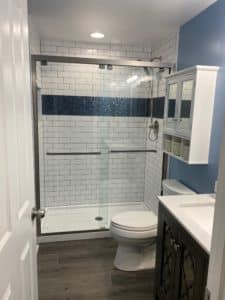
There are a few reasons I see again and again when it comes to leaky showers:
-
Old Age – Materials wear out. Caulk breaks down. Grout gets porous. After 15-20 years, a full bathroom refresh might be due.
-
Bad Installation – Sadly, I’ve fixed a lot of showers that were never done right to begin with. Improper slopes, poor waterproofing… it catches up.
-
House Movement – Homes settle over time. That can cause cracks and gaps that let water in.
-
Mismatched Materials – Not all products play well together. Incompatible waterproofing materials can lead to leaks.
-
Plumbing Problems – Sometimes the problem is hiding behind the walls, like worn-out seals or leaking pipes.
DIY vs. Professional Help: Where’s the Line?
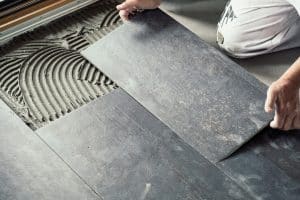
Sure, if you’ve just got a bit of cracked caulk or some loose grout, you might be able to patch it yourself. And that can hold things off, if the damage hasn’t gone deeper.
But if you’re seeing persistent signs like the ones above, DIY fixes usually just mask the issue. I’ve seen too many cases where homeowners spent months trying to patch things up, only to end up needing full structural repairs when the leak finally got too big to ignore.
What a Pro Bathroom Remodel for Leak Issues Really Involves
When you bring in a professional team like mine, it’s not just about making your shower look good—we’re solving the underlying problem.
Here’s what we do:
-
Thorough Inspection – We use moisture meters, thermal cameras, and our trained eyes to figure out exactly where the water is going.
-
Find & Fix the Source – That means removing anything that’s been damaged, sometimes down to the studs, and rebuilding it properly.
-
Modern Waterproofing Systems – These days, we have materials and techniques that are lightyears ahead of what was used 15–20 years ago.
-
Better Drainage – We make sure the slope, pan, and drain setup actually move water where it’s supposed to go.
-
Testing Everything – Before we close anything up, we test the whole system. If there’s a weakness, we find it now, not after your new tile is in.
Choosing the Right Contractor for the Job
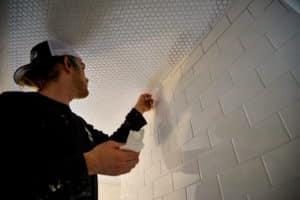
If you’re going to invest in a bathroom remodel to fix leaks, pick someone who actually understands water management, not just someone who knows how to lay tile.
Ask these questions:
-
Have you done leak repair remodels before?
-
What waterproofing system do you use, and why?
-
Are you licensed and insured?
-
Do you offer warranties for waterproofing?
-
Can I speak to past clients who had similar issues?
Smarter Shower Options to Prevent Future Leaks
When remodeling for leak repair, it’s the perfect time to upgrade your shower setup:
-
Advanced Waterproofing Systems – Brands like Schluter and Wedi offer full systems designed to keep moisture out permanently.
-
Curbless Showers – Sleek and modern, they’re also easier to waterproof when done correctly.
-
Fewer Grout Lines – Large tiles or solid panels mean fewer places for water to sneak in.
-
Pre-Formed Niches & Benches – These come fully waterproofed, unlike traditional ones built on-site.
-
Smart Leak Sensors – Tech-savvy additions that alert you to leaks before you even see a stain.
Getting Ready for Your Remodel
If you’re ready to stop the leaks and prevent future damage, here’s how to prep:
-
Gather Details – Think about when you first noticed issues, snap some photos, and jot down what’s been tried already.
-
Plan for Downtime – You may not have access to your main bathroom for a bit, so have a backup plan.
-
Set a Realistic Budget – Remember, when fixing leaks, most of the cost is in what you don’t see—the waterproofing, framing, and prep work.
Final Thoughts
A leaky shower isn’t just annoying—it can be destructive. But catching it early and doing it right with a professional remodel can save you a ton of money and stress down the road. If you’re seeing any of the signs mentioned here, don’t wait. Let’s fix the problem before it becomes a disaster.
Need help figuring out where to start? Contact Artistic Tile & Design today and we will walk you through your options.
